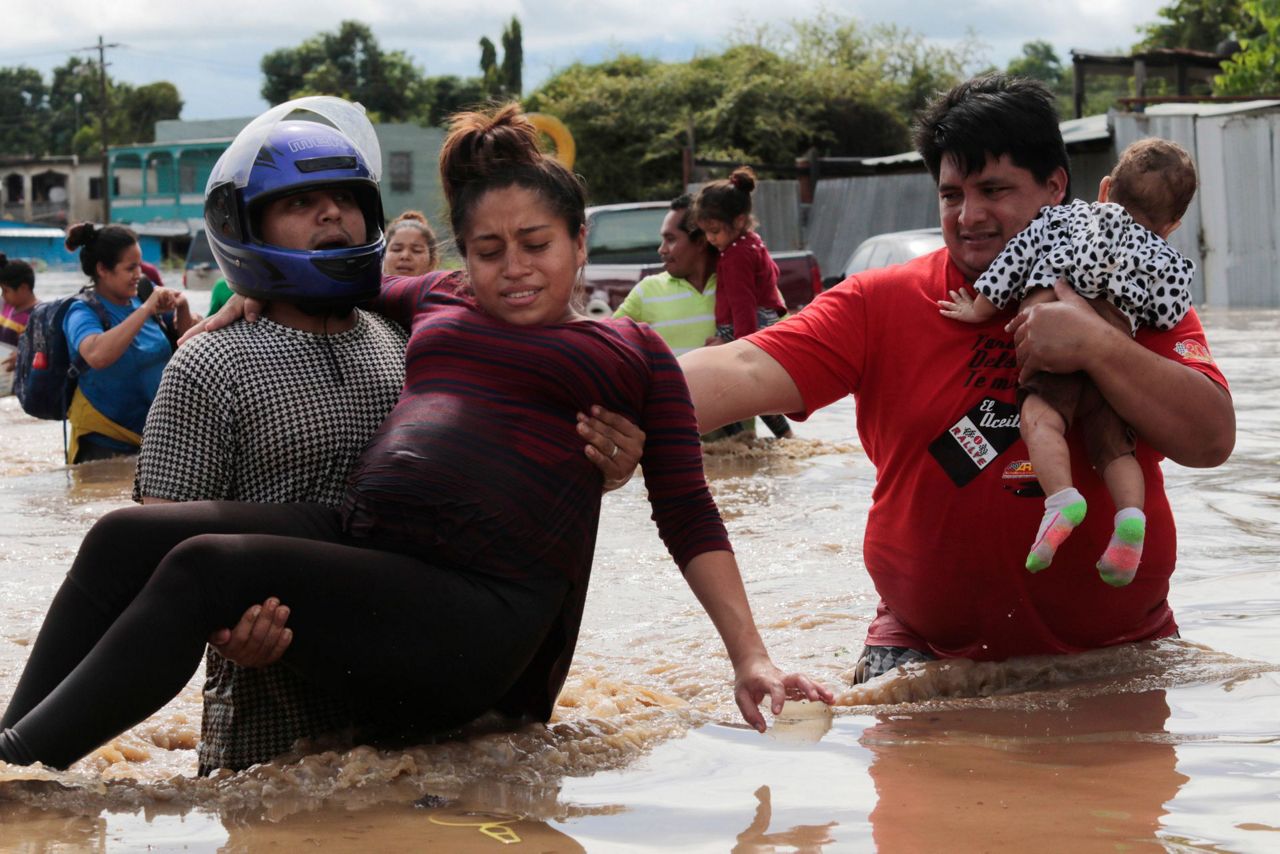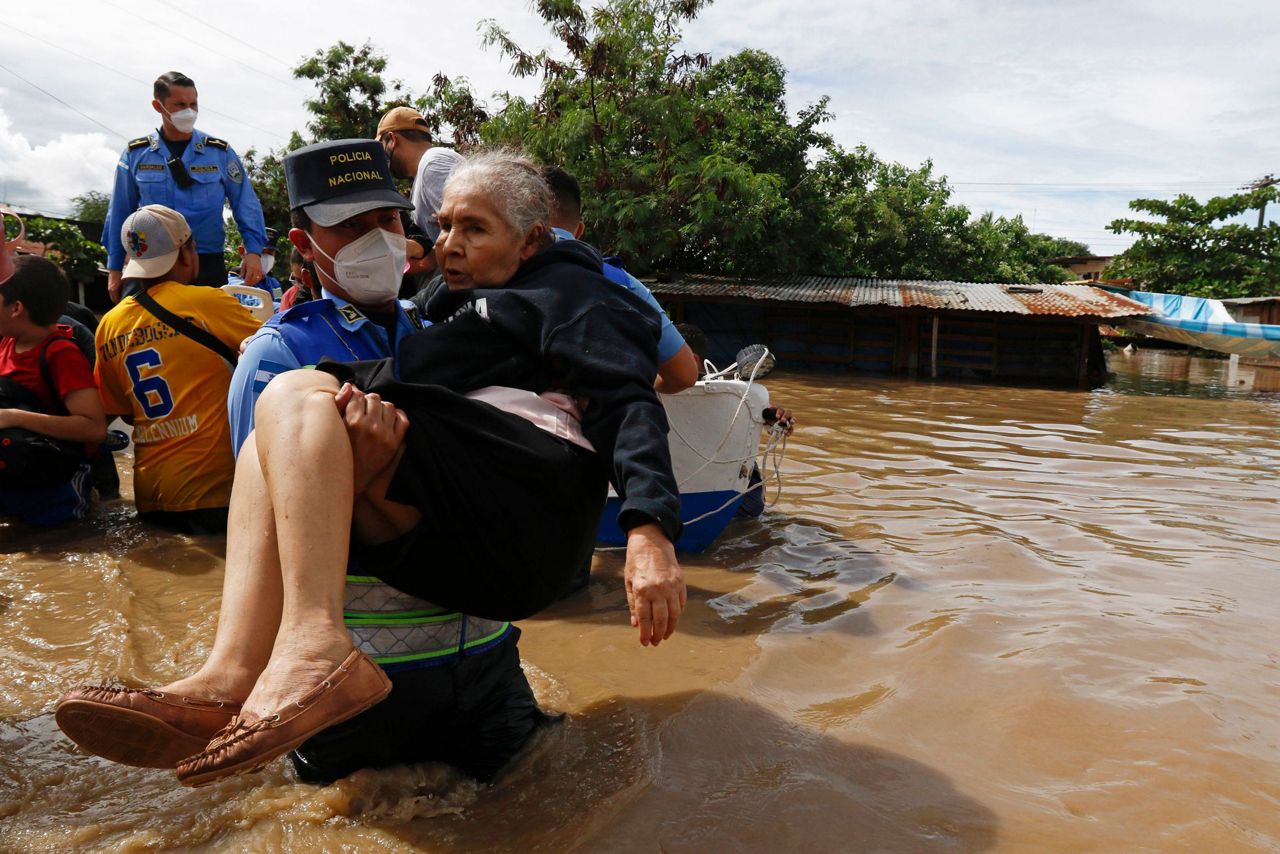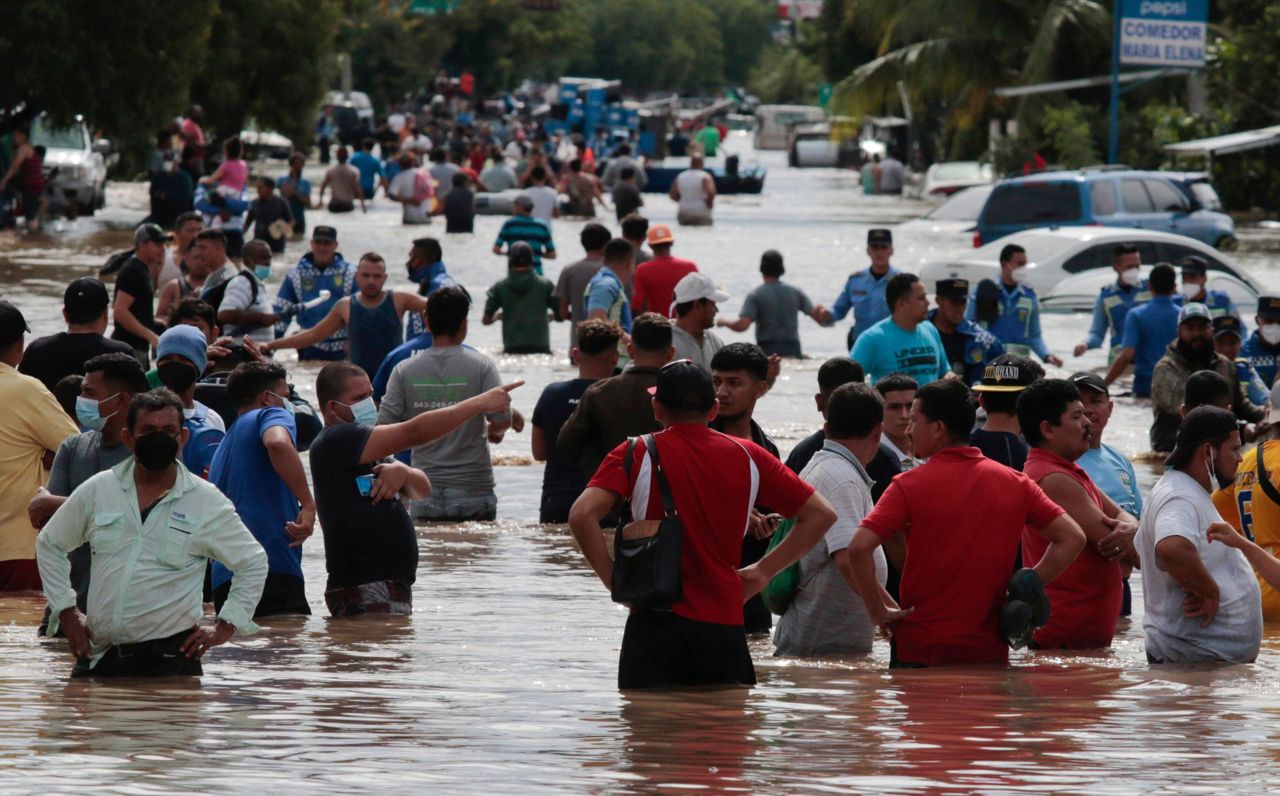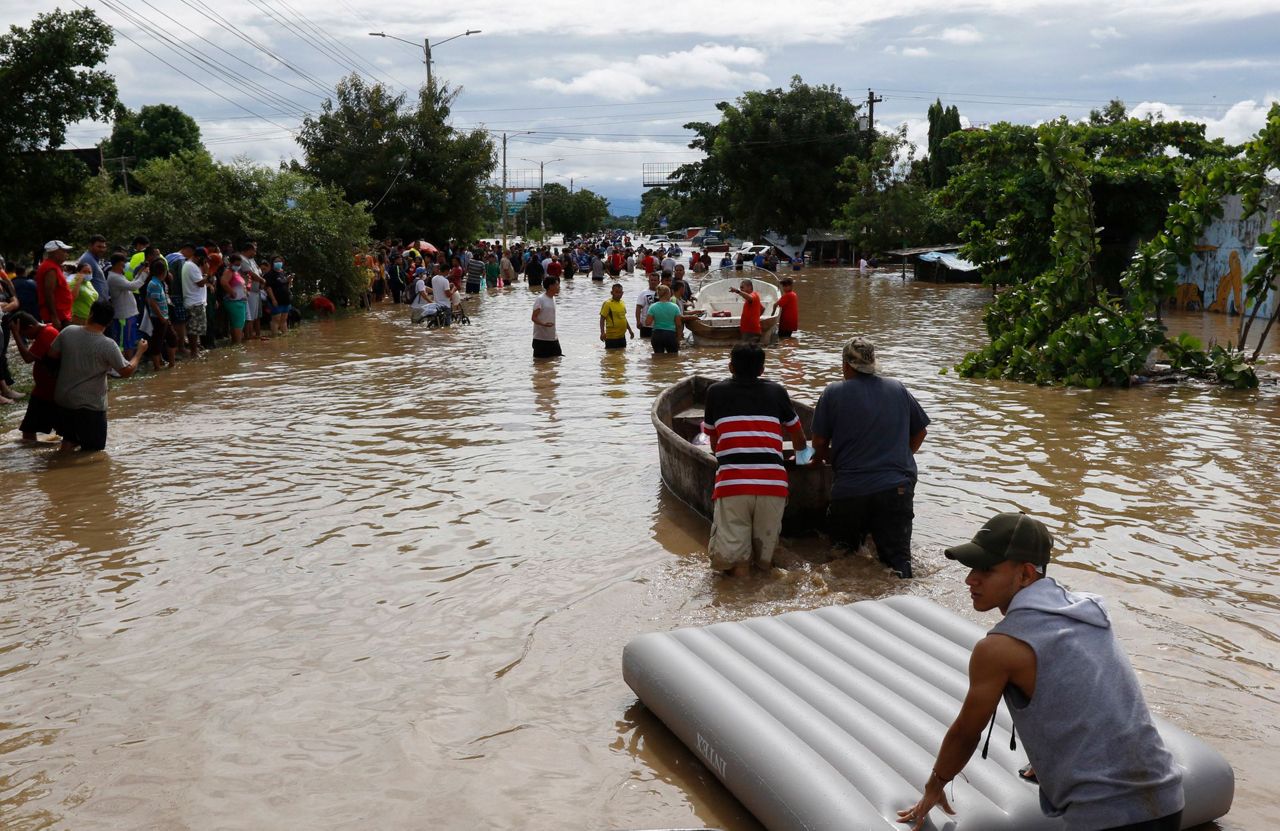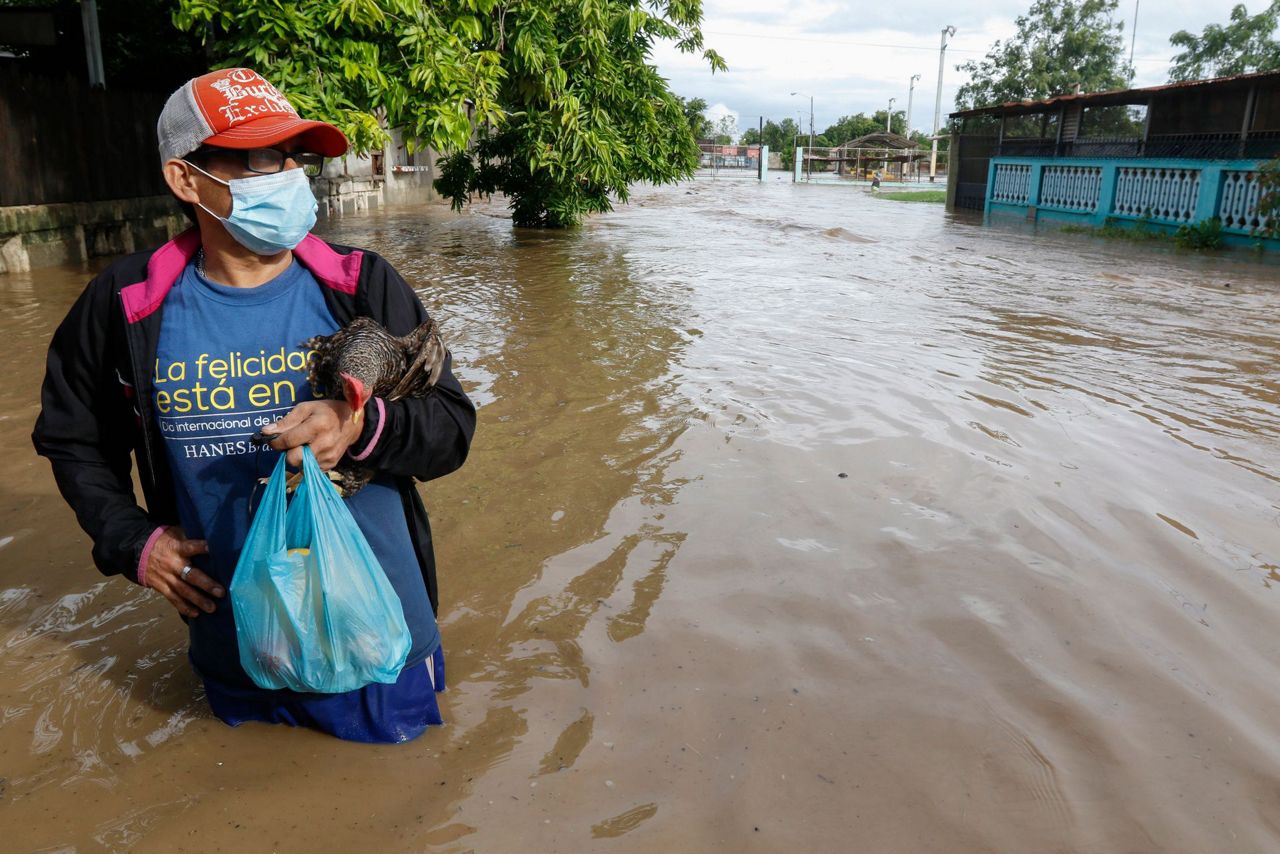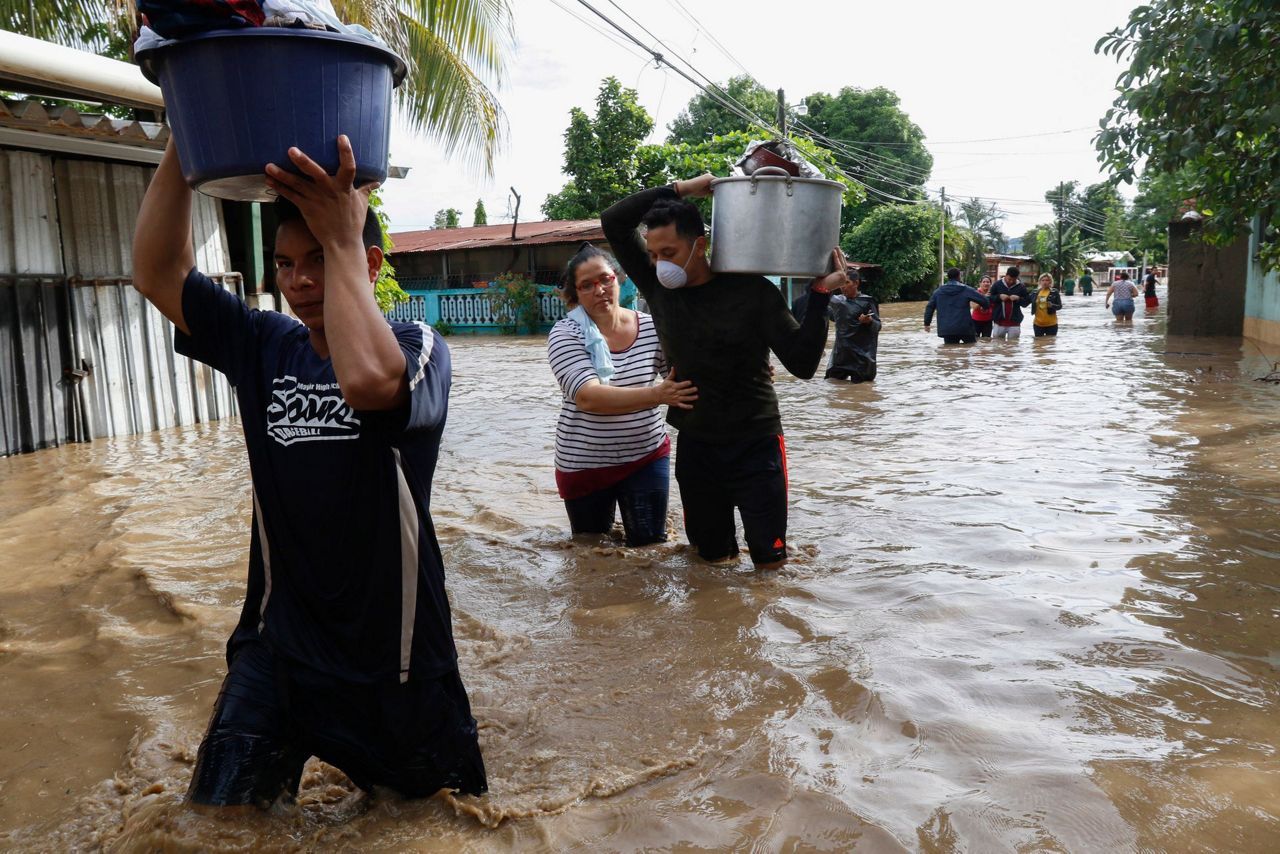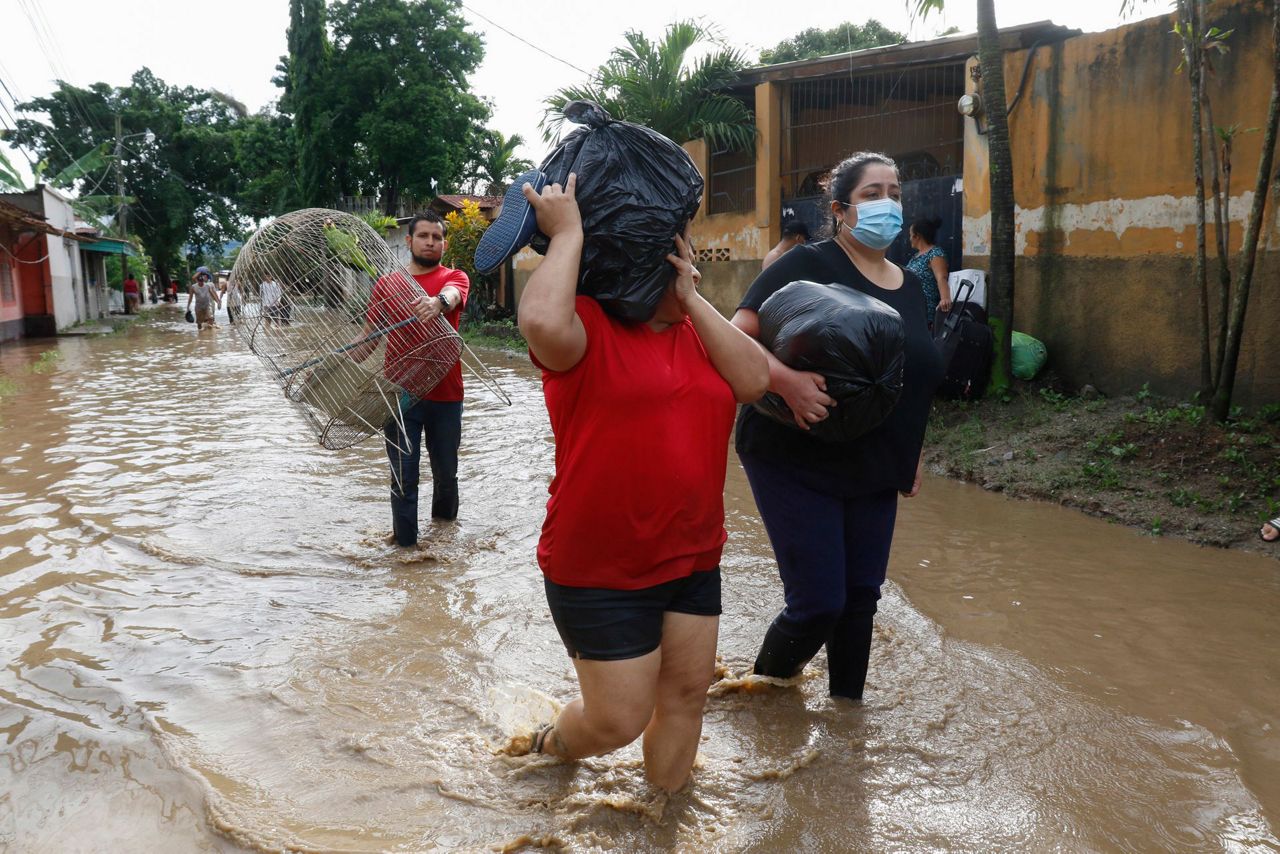TEGUCIGALPA, Honduras (AP) — The rain-heavy remains of Hurricane Eta flooded homes from Panama to Guatemala on Thursday as the death toll across Central America rose to at least 57. Forecasters said the once-mighty storm, now a tropical depression, was expected to regather and head toward Cuba and possibly the Gulf of Mexico by early next week.
The storm that hit Nicaragua as a Category 4 hurricane on Tuesday had become more of a vast tropical rainstorm, but it was advancing so slowly and dumping so much rain that much of Central America remained on high alert.
Governments and aid organizations warned that the flooding and landslides the heavy rain generated had created a slow-moving humanitarian disaster across much of the region.
On Thursday afternoon, Guatemala President Alejandro Giammattei said said a water-soaked mountainside in the central part of the country had slid down onto the town of San Cristobal Verapaz, burying homes and leaving at least 25 dead.
Two other slides in Huehuetenango had killed at least 12 more, he said. Earlier Thursday, five others had been killed in smaller slides in Guatemala.
Guatemala’s toll was on top of 13 victims in Honduras and two in Nicaragua. Panamanian authorities reported eight missing.
Eta had sustained winds of 35 mph (55 kph) and was moving north-northwest at 8 mph (13 kph) Thursday. It was centered 60 miles (95 kilometers) west of La Ceiba, Honduras.
In Guatemala, two children died when their home collapsed under heavy rains in the central department of Quiche, according to a statement by local firefighters. A third person also died in Quiche, but details were not immediately available. Giammattei confirmed a fourth death in a landslide in Chinautla Wednesday night.
On Thursday, Giammattei said on local radio that 60% of the eastern city of Puerto Barrios was flooded and 48 more hours of rain were expected.
Honduras' National Police said six more bodies had been found, bringing that country's toll to 13. The bodies of two adults and two children were found after excavations in a mudslide that occurred Wednesday in the township of Gualala, and two boys aged 8 and 11 died in another mudslide in the township of El Níspero.
Earlier, residents found the body of a girl buried in a landslide Wednesday in mountains outside the north coast city of Tela. In the same area, a landslide buried a home with a mother and two children inside it, according to Honduras Fire Department spokesman Óscar Triminio. He said there was also a 2-year-old girl killed in Santa Barbara department when she was swept away by floodwaters.
Heavy rain was forecast to continue across Honduras through at least Thursday as Eta moves toward the northern city of San Pedro Sula.
Dozens of residents of the San Pedro Sula neighborhood of Satelite had to abandon their homes at 4 a.m. Thursday when water from the Chamelecon river arrived at their doorsteps.
Honduran officials earlier reported that a 12-year-old girl died in a mudslide and a 15-year-old boy drowned trying to cross a rain-swollen river. Two other deaths were reported in Nicaragua.
Marvin Aparicio of Honduras’ emergency management agency said Wednesday that some 457 homes had been damaged, mostly by floodwaters. There were 41 communities cut off by washed out roads and nine bridges in the country were wiped out by swollen rivers.
Among those rescued were Karen Patricia Serrano, her husband and five children. Their home was flooded with waters from the Lancetilla river and they had been in a shelter in the northern city of Tela since Monday.
“We lost everything,” the 32-year-old woman said. “I don’t know what we’re going to do. I even lost my little animals,” she said, referring to chickens, cats and dogs.
At least eight people were reported missing after flooding and landslides in the Panama province of Chiriqui, which borders Costa Rica.
“The situation is worrisome, a lot of help is needed,” said Javier Pittí, mayor of Tierras Altas in Chiriqui. Landslides had closed many roads, including the main highway connecting the province to the rest of Panama.
The homes of more than 200 residents of the Ngabe Bugle autonomous Indigenous area were flooded out of their homes.
The U.S. National Hurricane Center forecast that parts of Nicaragua and Honduras could receive 15 to 25 inches (380 to 635 millimeters) of rain, with 40 inches (1,000 millimeters) possible in some isolated parts.
When what’s left of the storm wobbles back into the Caribbean it will regain some strength and become a tropical storm again, forecasts show.
And then Eta is predicted to slowly move toward Cuba and Florida, or at least close enough to Florida for forecasters to warn of 7 inches of rain for South Florida in the next five to seven days. And next week, Eta could even move into the Gulf of Mexico.
“Whatever comes out (of Central America) is going to linger awhile,” said Colorado State University hurricane researcher Phil Klotzbach. “I’m not convinced we’re done with Eta.”
That’s because what’s left of Eta still has spin, which is hard to kill off, and that should help it reform, said NOAA hurricane and climate scientist Jim Kossin.
Once it reforms and heads toward Cuba, meandering in the area for awhile, that the long-range model forecasts divulge.
“The winds aren’t going to be the problem. The rains are going to be the problem,” Klotzbach said.
Eta will be so big, wet and messy that it doesn’t have to make landfall in already rain-soaked South Florida to cause a mess, Klotzbach said.
“Slow-moving sprawling ugly tropical storms can certainly pack a precipitation wallop even if it doesn’t make landfall,” Klotzbach said.
___
Pérez D. reported from Guatemala City. Associated Press writers Juan Zamorano in Panama City, Seth Borenstein in Kensington, Maryland and Christopher Sherman in Mexico City contributed to this report.
Copyright 2020 The Associated Press. All rights reserved. This material may not be published, broadcast, rewritten or redistributed without permission.



